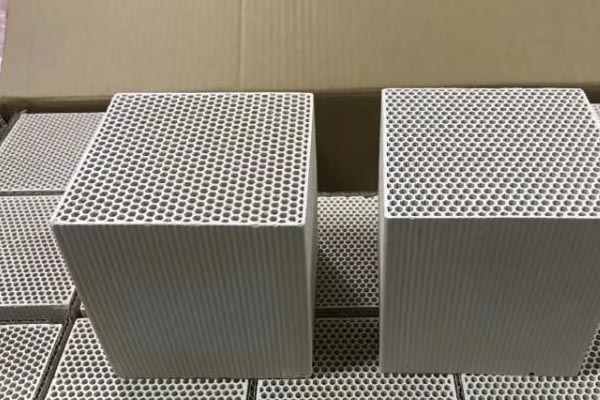
Zeolite honeycomb molecular sieve Performance and application of
Zeolite honeycomb molecular sieve is a kind of aluminosilicate material containing alkali metal or alkaline earth metal oxide with open framework and regular pore cage structure. It has been widely used since it was discovered by Swedish scientists in 1956, and then it has been widely used in petrochemical industry, environmental protection, bioengineering and other fields due to its special physical characteristics. And with Zeolite molecular sieve The demand has gradually expanded, and researchers have begun to expand the synthesis methods of a variety of zeolite molecular sieves to meet the needs of various fields.
Zeolite honeycomb molecular sieve has super adsorption performance. Its strong adsorption performance is due to a "surface force" generated by molecular gravity on the solid surface. When the fluid flows, some molecules in the fluid collide with the adsorbent surface due to irregular movement, resulting in molecular concentration on the surface, reducing the number of such molecules in the fluid to separation Purposes of clearing. Since the adsorption does not undergo chemical changes, as long as the molecules concentrated on the surface are managed to drive away, the zeolite molecular sieve will have the adsorption capacity again. This process is the reverse process of adsorption, which is called the resolution or regeneration process.
At the same time, zeolite honeycomb molecular sieve also has strong ion exchange performance, which refers to the process of compensating cation exchange outside the framework. The pore size of zeolite molecular sieve can be changed through ion exchange, thus changing its performance. After ion exchange, the number, size and position of cations change. For example, the number of cations in zeolite molecular sieve decreases after the exchange of high valence cations with low valence cations, often resulting in position vacancy and larger pore size; However, the larger the radius of the ion, the smaller the radius of the ion exchange, it is easy to make its hole blocked, so that the effective aperture has begun to reduce.
Thirdly, zeolite molecular sieve has a certain catalytic performance because of its unique crystal structure. When zeolite molecular sieve is used as catalyst or catalyst carrier, the catalytic reaction is controlled by the crystal pore size of zeolite molecular sieve. The size and shape of crystal pores and channels can play a selective role in the catalytic reaction.
With the deepening of research, zeolite molecular sieves have gradually moved from laboratory to industrial application. Due to its powerful performance, it can be integrated with the reactor. In membrane catalytic reaction, reaction and separation are coupled. At present, the application fields of zeolite membrane are pervaporation, gas separation and membrane reactor.
It is the needs of human practical activities and the development of application fields that constantly promote the development of zeolite molecular sieves. From natural zeolite to synthetic zeolite, from low silica zeolite to high silica zeolite; From silicoaluminium molecular sieve to aluminophosphate molecular sieve; From super micropore to mesoporous material; The development from inorganic porous frameworks to MOFs, as well as the recent emergence of macroporous materials, has effectively improved the yield, reduced the synthesis cost and environmental pollution.
